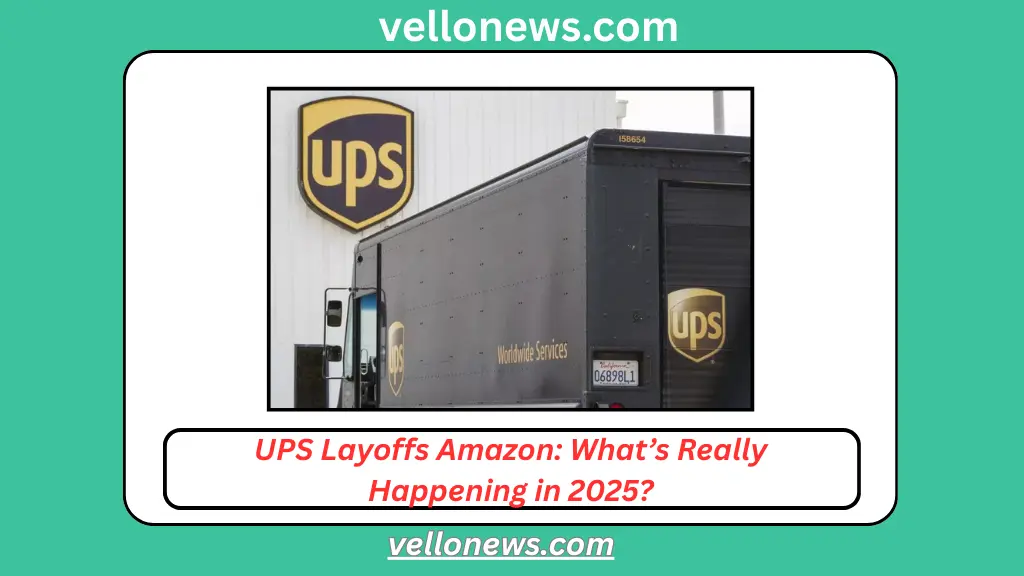UPS Layoffs Amazon- The world of logistics and e-commerce is changing fast, and two giants—UPS and Amazon—are right at the center of it. Recently, news about UPS layoffs and their impact on Amazon-related jobs has caught everyone’s attention. From earnings reports to major job cuts, there’s a lot to unpack. But what’s really going on behind the scenes? And more importantly, how does this affect workers and the economy?
UPS Layoffs Amazon: Overview
| Topic | Details |
|---|---|
| Company Involved | UPS (United Parcel Service), Amazon |
| Main Issue | Layoffs in 2025 impacting 12,000–20,000 UPS jobs |
| Industry Affected | Logistics, E-commerce, Delivery Services |
| Reason Behind Layoffs | Decline in package volume, automation, shift in Amazon-UPS partnership |
| Impact on Amazon Jobs | Fewer contract deliveries, delayed shipments, possible warehouse shifts |
| UPS Earnings (2025 Q1) | Lower than expected, triggering cost-cutting moves |
| Future of UPS Jobs | Uncertain, with more automation and restructuring expected |
UPS and Amazon: A Shifting Relationship
There was a time when Amazon relied heavily on UPS for shipping millions of packages across the U.S. But things have changed. Amazon has built its own delivery network, launched its own fleet, and reduced its dependency on third-party shippers like UPS. As a result, Amazon UPS layoffs were bound to happen.
In early 2025, UPS announced it would cut nearly 20,000 jobs, many of which were tied to Amazon contracts. This decision came shortly after UPS reported lower-than-expected earnings, citing a sharp decline in delivery volume—especially during the peak shopping season. The company is now focused on automation, AI, and cost-saving strategies, leaving thousands of workers uncertain about their future.
The Bigger Picture: Why UPS Layoffs Matter
Let’s face it—UPS layoffs aren’t just numbers. Behind each cut is a family, a future, and a story. For decades, UPS has been a symbol of job stability in America. Whether it was seasonal drivers, package handlers, or administrative staff, the company offered solid wages and benefits.
Now, with Amazon building its own shipping empire, UPS is under pressure. This shift has not only impacted job security but also raised concerns about the future of UPS Amazon jobs. The logistics industry is becoming more competitive, automated, and unpredictable. As these companies prioritize speed and efficiency, human workers are increasingly being replaced—or sidelined.
Also Read:
Who Won the Canadian Prime Minister Election?
UPS Earnings and What They Mean
UPS’s earnings for the first quarter of 2025 were disappointing. The company blamed higher costs, lower volume, and changes in consumer behavior. Online shopping hasn’t stopped, but people are more cautious now. Combine that with Amazon’s growing independence, and you’ve got a recipe for job cuts.
This earnings dip forced UPS to take a hard look at its workforce. That’s why the UPS 20,000 jobs layoff plan was introduced. While some roles will be automated or outsourced, others are simply disappearing.

Will More UPS Amazon Jobs Disappear?
It’s very likely. If Amazon continues to expand its logistics network, it won’t need UPS as much. This means fewer contracts, reduced collaboration, and more Amazon UPS layoffs in the near future. Additionally, seasonal hiring may also drop, especially during high-demand months like November and December.
Workers who once depended on UPS for a steady paycheck are now advised to upskill or look for opportunities in newer fields like drone delivery, AI logistics, and tech-based warehousing.
Final Thoughts
The headlines about UPS layoffs Amazon are more than just business updates—they’re a reflection of how fast industries can change. As consumers, we benefit from fast deliveries and low prices. But behind the scenes, thousands of workers are facing an uncertain future.
In the end, this is a wake-up call. For companies, to plan better. For workers, to stay adaptable. And for all of us, to realize that even the biggest companies must evolve—or risk being left behind.